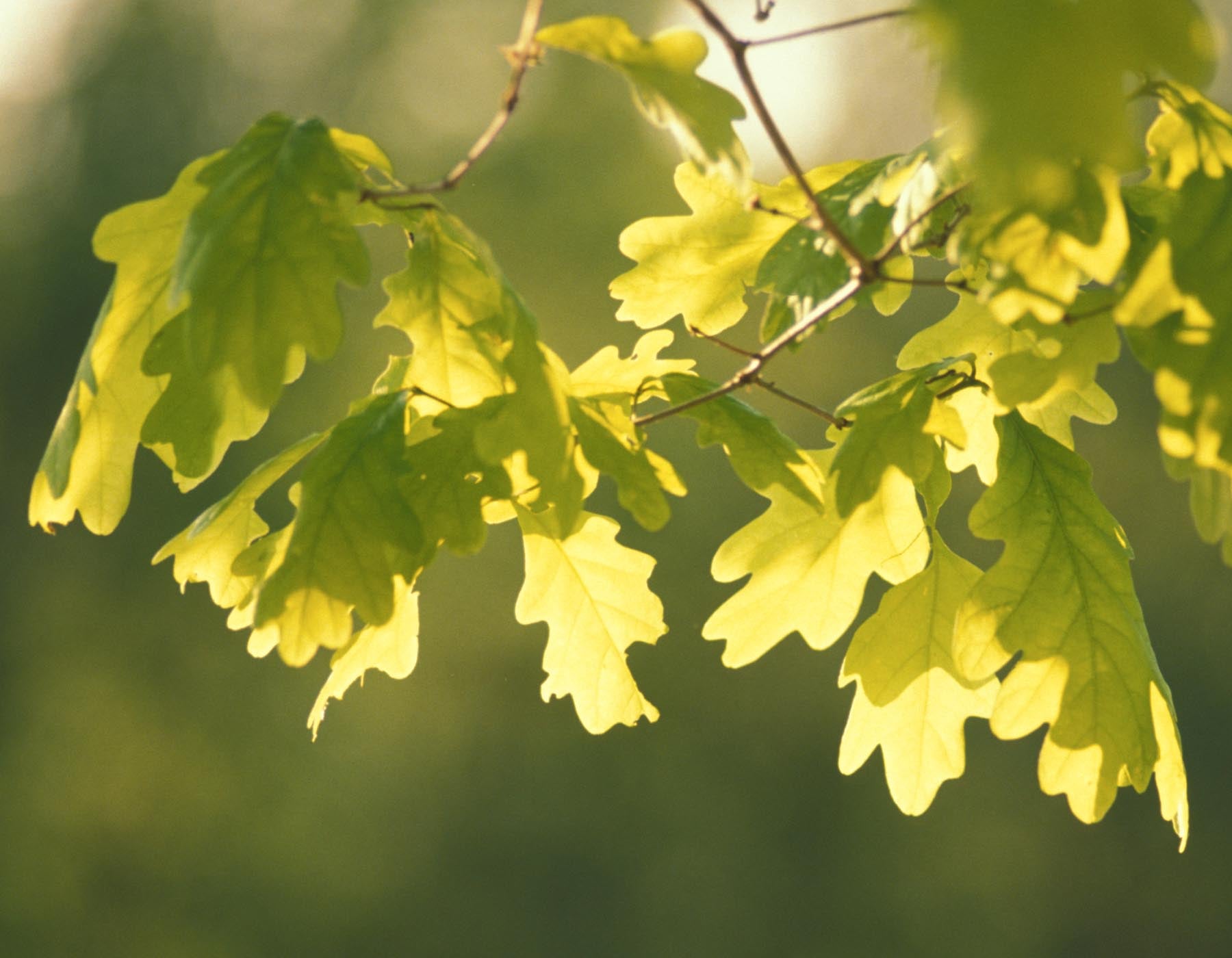Common statewide. If cultivated, it will grow on almost every soil type.
Missouri is home to 19 species and at least 16 hybrids of oaks.
Oak mast (acorns) is a choice food for deer, squirrels, turkeys and other wildlife.
Economically Important
Most of our forest products industry, including flooring, barrel staves, pallets, and railroad ties, is based on the oaks. Oaks are also the most important hardwoods in North America. Only three other species or groups of trees—all conifers—exceed them nationally in lumber production. In Missouri, oak saw timber represents over 60 percent of all our saw timber.
Historically Important
Much of our heritage and culture has been influenced by the oaks because of their unique qualities and sheer abundance. In ancient times humans not only admired but actually worshipped oaks. Ships and empires were built with oak. Oaks live in legend and history: The Old Oaken Bucket, the Charter Oak, and Robin Hood's Sherwood Forest.

Distinguishing Characteristics
The oaks, which are related to beech, chestnut and chinquapin, have several distinguishing characteristics. The fruit is the familiar acorn, a staple food for many species of wild animals. Leaves occur singly on alternate sides of the twig. Large pores are found in the springwood and rays of wood radiate from the pith. Next to the acorn, the best identifying characteristic is the cluster or groups of buds found at the end of the twigs. The star-shaped pith of the twigs is characteristic also.
Title
White Oaks
The white oak group, called botanically Leucobalanus, is one group. In this the white oak, Quercus alba, is the predominant species. It also includes post, bur, swamp white, chinquapin, over cup, and swamp chestnut oak.
These species provide the so-called sweet mast. Their acorns mature in one year, are less bitter, and germinate in the fall.
Buds are rather rounded. The bark is light gray in color and rather flaky. Leaves are lobed or wavy along the edges but the lobes and ends of the leaf are rounded and smooth.
The wood cells of these trees are coated inside with a plastic-like substance called tyloses. This makes the wood waterproof and accounts for its use in barrels, buckets, and ships. White oak wood is most durable.
Title
Red (or Black) Oaks
Erythrobalanus is the name for the red or black oak group. This includes the true black oak, Quercus velutina, and also northern red, southern red, pin, shingle, willow, water, blackjack, cherrybark, shumard, and scarlet oaks. The live oaks are usually grouped here, too, although none grow in Missouri.
Red oaks are characterized by the little bristles or spine-like tips at the end of their leaves or lobes. The leaves may be lobed or entire as in the case with shingle, willow, and water oaks. Even in this latter case, bristles are at the tips of the leaves. Buds are pointed, bark is dark gray to black. It is rather rough and ridged rather than flaky.
Acorns take two years to mature and they are bitter with tannin. They germinate in the spring.
Red oak lumber is important for flooring, railroad ties, and other uses, but it is not as very durable or waterproof as white oak.
This short-lived oak can withstand fire because of its thick bark. It can be found scattered statewide.
This large oak can live for hundreds of years. It is similar to white oak.
This oak grows naturally in the Bootheel. It is similar to southern red oak.
This small, shrublike oak is found in the prairies and open areas of northern Missouri.
This oak is found statewide, and is used to make railroad ties and flooring. It is popular for landscaping.
This rare and imperiled tree only lives in the web bottomlands of southeast Missouri.
While cultivated statewide, it only occurs naturally in southeast Missouri, and along the Mississippi and Meramec rivers.
Pin oaks are fast-growing and popular in landscaping and windbreaks.
This oak got its name from settlers who used them for fence posts. They can live for 300 years or more.
This oak grows fast and has beautiful scarlet fall color. It is common in the Ozarks.
Wood from this oak can be split into thin sheets, which used to be made into shingles.
This is one of the largest southern red oaks. It is found primarily in the southern three-quarters of the state.
Also called a basket oak because it splits easily into long strips for making baskets. It is only found in counties around the Bootheel.
This oak can live for centuries. The underside of the leaves flash white during updrafts preceding summer storms.
This is also known as Spanish oak, although we don't know why. They are scattered through southern Missouri.
This oak only occurs in four counties around the Bootheel. It is a species of conservation concern.
These oaks can live for over 300 years and are found throughout Missouri.
This oak is uncommon in Missouri and is found only in southeast Missouri.





















